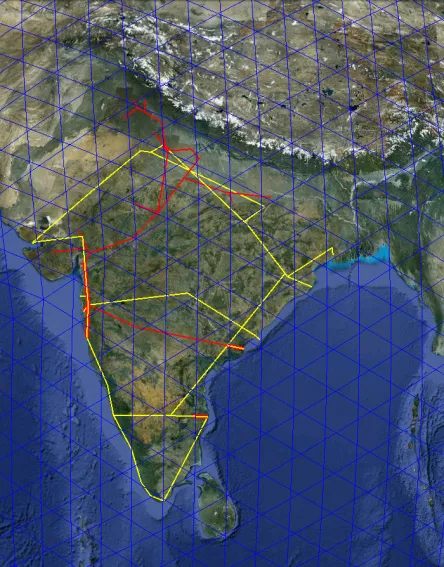
India’s offshore powerhouse revealed
By Foerd AmesThe October 2012 All India Seminar On Clean Energy & Energy Conservation, Nagpur, seemed more developed and urgent than in 2008. Exemplified in that conference and after the 2012 blackouts, the seminar focused on the fact that conservation, only, will not offset energy requirements. Whole systems replacement, or augmentation, is required and coincides with integrating clean energy sources. Actionable methods and wares for increasing renewable energy efficiency were directly addressed. Intriguing descriptions of solar power, wind energy, and control topologies were prominent. Discussions rounded out on using intelligent grids to allocate loads of existing or new utilities.
India is notably the world’s third largest wind power market. Through favorable financing about 30 GW new capacity can be added, under the 12th Five-Year Plan, to reach 89 GW by 2020 and 191 GW by 2030. Having much mineral deposits, level plains, and widely distributed rural power needs, indeed, heavily investing in decentralized solar and wind technologies seems sensible. A question of land use arises- not just about consents- but of environmental value. To address such concern, the Minister of New and Renewable Energy constituted an Offshore Wind Energy Steering Committee to responsibly develop India’s coastal wafts. Several regions were identified for locating wind farms in shallow waters 20km from land. Siting the farms on oil and gas exploration lines may reduce new transmission infrastructure. Co-locating MHK marine hydrokinetic energy converters affords further synergy and India must structure enduring energy pathways that include renewable ocean power.
Over the past two months, the author performed general assessment of India’s position within global wave dynamism. The study examines annual wave energy, water depth correlation to MHK extraction cost, and landfall grid integration with nearshore high voltage direct current and gas transmission lines. Within existing conditions is much potential for industrial wave energy utilization. Integration of this renewable asset, with both East and West coast grids, would complete a circuit that enables power smoothing during seasonal wave variation about India. The additional function of electrolytically producing hydrogen gas could help commence the transition to clean fuels. Toward such low carbon emissions, exemplified by Tata Motor’s expected 2015 launch of hydrogen powered automobiles, large scale renewable marine energy implementation intrinsically manages water purification, hydrogen production, and cyclable water processes related to climate change.
The seminar reaffirmed that India has all necessary components to incubate industrial wave energy extraction. Combination of location, industrializing infrastructure, human resource, and considerable wave energy makes India an ideal development and “test bed” center for scaling MHK marine hydrokinetic technologies. Its remarkable engineering and manufacturing capacity can be well applied to producing, using, and exporting such equipment. MHK, and particularly electricity generated from water waves, has advantage in that energy conversion is concentrated from several dynamic processes and is predictable days in advance. Compared with most solar or wind devices, MHK location and footprint least interfere land use and consent issues. While much of India’s nearshore waves are relatively gentle, and such disposition may be favorable with certainty that storms of climate change are intensifying, incentives for wave energy conversion should be included in forward looking Five Year Plans. Successful implementation wholly depends upon a technical approach that includes Environmental Impact Assessments and true costs.









![Cross Domain [Manu + SBR + ABF + ABR + FMCG + HBR + ]](https://cmg-qa.s3.ap-southeast-1.amazonaws.com/s3fs-public/styles/exclusive_featured_article/public/2025-01/earth-3537401_1920_4.jpg.webp?itok=WaRpTJwE)
![Cross Domain [SBR + ABR]](https://cmg-qa.s3.ap-southeast-1.amazonaws.com/s3fs-public/styles/exclusive_featured_article/public/2025-01/pexels-jahoo-867092-2_1.jpg.webp?itok=o7MUL1oO)









 Advertise
Advertise


